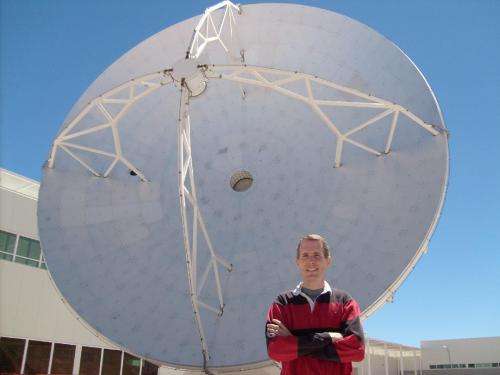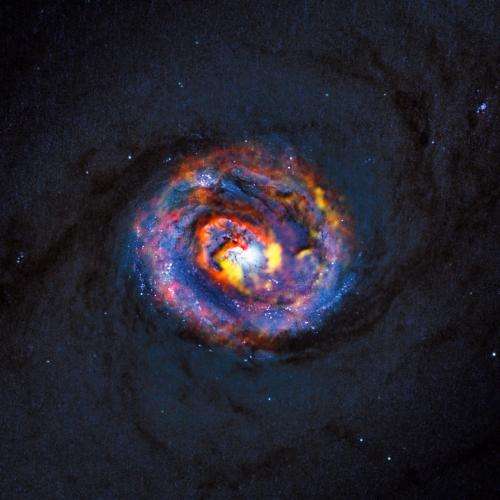Astronomer contributes to study of black hole ingesting matter

An international team of astronomers that includes a Rutgers professor have shared remarkably detailed observations of a black hole caught in the act of ingesting and expelling matter from the center of a galaxy. These observations, made with a powerful new array of radio telescopes in Chile, will give scientists new insights into how black holes and the galaxies that host them evolve together.
The Rutgers team member, Andrew Baker, an associate professor of physics and astronomy in the School of Arts and Sciences, contributed to the competitive proposal that secured observing time for the black hole investigation, and to the paper reporting its results in the European journal Astronomy & Astrophysics. He also spent part of 2009 in Chile helping commission the observatory, called ALMA.
"Thanks to ALMA's power, this is among the sharpest such pictures ever made of a black hole that is actively feeding on a surrounding disk of material and converting it into electromagnetic radiation," said Baker.
Astronomers note that there are black holes with masses up to several billion times that of our sun at the hearts of almost all galaxies in the universe, including our own Milky Way. Using ALMA to examine a relatively quiet black hole in a nearby galaxy, the researchers saw a surprising spiral structure in the molecular gas close to the center of the galaxy, evidence of how material is flowing into the black hole and fueling it.
They also saw material being swept away from the black hole by an energetic outflow – material that would otherwise have helped form the next generation of stars in the galaxy. This process can stop star formation and regulate the growth of a galaxy's characteristic central bulge.
ALMA, formally known as the Atacama Large Millimeter/submillimeter Array, is located in Chile's Atacama Desert, the driest region in the world.
The types of radio signals that ALMA gathers from stars and galaxies are easily blocked by moisture, so the very low humidity and cloud cover make this remote and desolate location a perfect setting for these observations.

Baker recalled his arduous trips to the site in 2009, which began in Santiago with flights to the mining town of Calama, followed by two-hour bus rides up to ALMA's operations support facility on the side of a mountain at an elevation nearly 10,000 feet above sea level.
But the effort was worth it.
"It was a great challenge and enormous honor to help commission ALMA," he said. "I have vivid memories of working far into the night with talented colleagues from all over the world, beneath a beautiful night sky dominated by the southern Milky Way. It's exciting to see the array now delivering on the scientific potential we were aware of back then."
The array of 66 telescopes is located on a plateau another mile above the operations support facility, at 16,500 feet. Built and operated by a partnership of research institutions in North America, Europe, and East Asia in cooperation with the Republic of Chile, it began observations in 2011.
Journal information: Astronomy & Astrophysics
Provided by Rutgers University



















